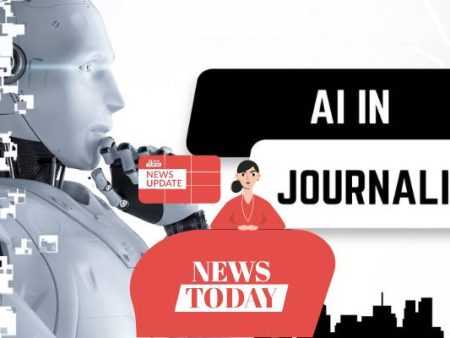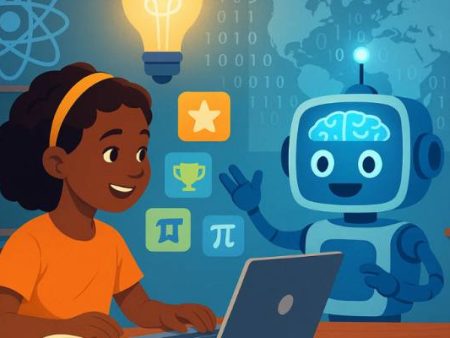Video has become the language of the internet. Whether you’re scrolling on TikTok, watching YouTube explainers, or catching corporate updates on LinkedIn, one thing is clear: people prefer video to text.
In fact, a 2023 Wyzowl report found that 91% of businesses use video as a marketing tool, and 96% of marketers say video is an important part of their strategy.
The problem? Not everyone has the time, skills, or patience to learn complex editing software. I’ve been there—fiddling with Adobe Premiere timelines or wrestling with audio syncing until it feels like the project will never end. It’s overwhelming, especially if you’re not a professional editor.
This is where AI-powered tools step in. They’ve changed the game by making it possible to create polished, professional-looking videos without formal editing knowledge. And that’s not hype—it’s happening right now.
So, if you’ve ever thought, “I want to make videos but I don’t know how,” this is your roadmap. This isn’t a gimmicky “just press a button” promise.
It’s a practical walk-through of how to leverage AI tools to make stunning content—whether you’re a small business owner, a teacher, a marketer, or just someone with a story to share.
Chapter 1: Why Video Matters More Than Ever
Let’s pause on the “why.” Why should you even bother with video?
- Engagement: People are more likely to engage with video than text. Social media platforms prioritize it in algorithms.
- Retention: Viewers retain 95% of a message when it’s delivered by video compared to only 10% through text (Insivia).
- Accessibility: Video reaches audiences who may not read long posts or have time to parse dense blogs.
Here’s the bottom line: video isn’t optional anymore. It’s the dominant format for communication online. The real challenge is how to make it when you don’t have editing skills.
Chapter 2: The AI Revolution in Video Creation
AI has stepped into video production with astonishing speed. Not just in editing, but in automating almost the entire pipeline:
- Scriptwriting with tools like ChatGPT.
- Voiceovers with lifelike synthetic voices from ElevenLabs or Murf.
- Stock footage matching from platforms like Pictory or InVideo.
- AI avatars delivering your script in professional tones with services like Synthesia.
- Auto-subtitling and translations for accessibility.
This means you don’t need a camera crew, a green screen, or hours of editing to produce content that looks polished. The workflow has shifted from technical mastery to creative direction.
Chapter 3: AI Video Generation for Beginners
If you’re brand new to this, start with AI video generation for beginners. Most modern tools are designed with non-experts in mind.
A typical process looks like this:
- Choose your platform – Options like Pictory, Lumen5, and Synthesia are beginner-friendly.
- Input your content – You can paste a script, upload a blog post, or enter key talking points.
- Select style and assets – Pick a template, background music, or an avatar.
- Generate preview – The AI combines your elements into a draft.
- Tweak and publish – Adjust pacing, replace clips, or refine text.
What once took 10–15 hours in editing software can now take under an hour with AI. And it’s not about cutting corners—it’s about focusing your energy on storytelling instead of technical headaches.
Chapter 4: A Guide on to Making Explainer Videos Using AI Tools
Explainer videos are among the most effective content formats for businesses, and AI makes them much easier to produce. Here’s a guide on to making explainer videos using AI tools step by step:
- Identify the core message – What problem are you solving? Keep it clear and specific.
- Draft a concise script – Aim for 60–120 seconds. Tools like ChatGPT can help refine tone.
- Pick your format – Whiteboard animation, avatar-led presentation, or stock footage montage.
- Generate visuals – Many AI platforms suggest stock clips that align with your script.
- Add AI voiceover – Choose a professional voice (male, female, or regional accent).
- Brand it – Upload your logo, use brand colors, and add a call-to-action.
These kinds of videos are gold for onboarding, product demos, and educational content. And they’re now accessible without hiring a motion graphics team.
Chapter 5: How to Use AI to Repurpose a Blog Post
This is one of my favorite hacks: how to use AI to repurpose a blog post into a video.
Here’s how:
- Copy the text from your blog.
- Paste it into a platform like Lumen5 or Pictory.
- The AI summarizes key sentences and matches them with stock visuals.
- Add background music and subtitles.
- Export a ready-to-publish video.
Why does this matter? Because you don’t need to reinvent the wheel. If you already have a content library—blog posts, newsletters, whitepapers—you can spin them into videos that reach audiences who prefer watching to reading.
It’s also efficient. Instead of spending hours creating new video content, you recycle existing material into fresh formats.
Chapter 6: Human Touch vs. AI Efficiency
Now, I’ll be honest—AI videos sometimes feel a little too polished, almost sterile. Humans like imperfections. A slight stumble in speech, a laugh, or even background noise can make content feel authentic.
So, while AI gets you 90% of the way to a professional-looking video, you may want to sprinkle in human touches:
- Add your own recorded intro/outro.
- Personalize captions with casual phrasing.
- Mix AI-generated voice with your real voice for variety.
This balance keeps the content efficient but still grounded in humanity.
Chapter 7: Accessibility and Inclusivity with AI Video
AI is also breaking barriers in accessibility. Tools can now automatically generate subtitles, translations, and even sign-language avatars.
For example, multilingual support is becoming mainstream. If you run a business in the U.S. but want to reach Spanish-speaking customers, AI can auto-translate and voice-dub your video into Spanish, French, or Mandarin. That’s a game-changer for inclusivity and global reach.
It also makes your content more discoverable. Subtitled videos rank higher on SEO because search engines can crawl the text.
Chapter 8: Data and Impact—Why This Shift Is Huge
The rise of AI video isn’t just anecdotal—it’s measurable.
- According to MarketsandMarkets, the AI in video analytics market is expected to grow from $15.9 billion in 2023 to $53.4 billion by 2028.
- Wyzowl found that 89% of video marketers say video gives them a good ROI, with AI dramatically lowering production costs.
- HubSpot reported that 87% of Gen Z prefer video content when learning about products.
This data points to a simple truth: the demand for video is exploding, and AI is democratizing who gets to produce it.
Chapter 9: Practical Use Cases
Here are a few practical ways to leverage AI video creation today:
- Small businesses: Create explainer videos for products without hiring videographers.
- Educators: Turn lesson plans into engaging animated explainers.
- Marketers: Repurpose blogs, case studies, or podcasts into bite-sized video snippets.
- Nonprofits: Produce awareness campaigns with limited budgets.
- Individuals: Make personal brand content, from LinkedIn updates to YouTube shorts.
AI isn’t just for Fortune 500 companies—it’s accessible to freelancers, creators, and community organizations.
Chapter 10: Challenges and Limitations
Of course, it’s not all smooth sailing. A few challenges worth noting:
- Generic feel: Stock footage can feel repetitive.
- Lack of nuance: AI voiceovers sometimes miss emotional tone.
- Dependence on templates: Overuse can make videos feel cookie-cutter.
- Learning curve: Even with AI, some tweaking is needed to get results you’re proud of.
Acknowledging these limits helps set realistic expectations. AI isn’t magic—it’s a tool. But it’s a tool that removes most of the barriers that used to keep people from producing video.
Chapter 11: My Personal Take
Here’s my opinion after experimenting with AI video tools: they don’t replace human creativity—they enhance it.
I’ve seen small businesses light up when they realize they can make a professional explainer video in under an hour. I’ve watched educators breathe a sigh of relief when they can scale lessons without spending nights editing.
But I’ve also felt a pang of discomfort at how “perfect” some AI videos look. Sometimes the rough edges are what make content relatable. And I don’t think AI should erase that.
The sweet spot, in my view, is using AI to handle the heavy lifting—then adding your own personality to make it resonate.
Chapter 12: Where This Is Headed
The future of AI video is moving fast. Expect tools that not only generate videos but also:
- Adapt style to match your personal brand automatically.
- Integrate interactive features (clickable buttons, polls, branching storylines).
- Generate entire series of videos from a single idea.
We’re heading toward a world where video production feels less like editing and more like directing. You say what you want, and the machine builds it. Your role is guiding vision, not splicing timelines.
And honestly? That excites me. Because it means video creation is no longer limited to professionals—it’s open to anyone with a message worth sharing.
Conclusion
So, do you need editing skills to make professional-looking videos anymore? No. AI tools have lowered the barrier so much that all you really need is an idea and a willingness to try.
From AI video generation for beginners, to a guide on to making explainer videos using AI tools, to practical hacks like how to use AI to repurpose a blog post, the path is clearer than ever.
The challenge now isn’t whether you can make video—it’s whether you’ll choose to. Because in a world where video is the dominant medium, not showing up in that format is like whispering in a stadium full of microphones.
My advice? Experiment. Don’t worry about perfection. Use AI for the hard parts, sprinkle in your personality for the rest, and hit publish. Because your story deserves to be told—and now, the tools to tell it are finally within reach.


